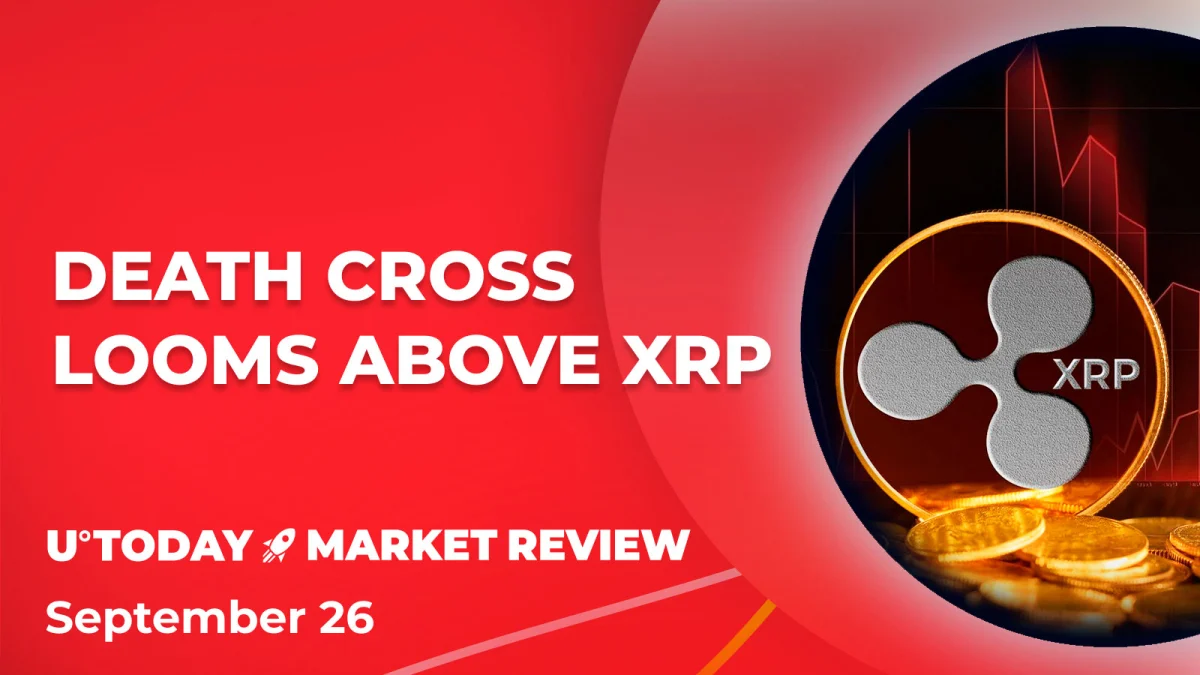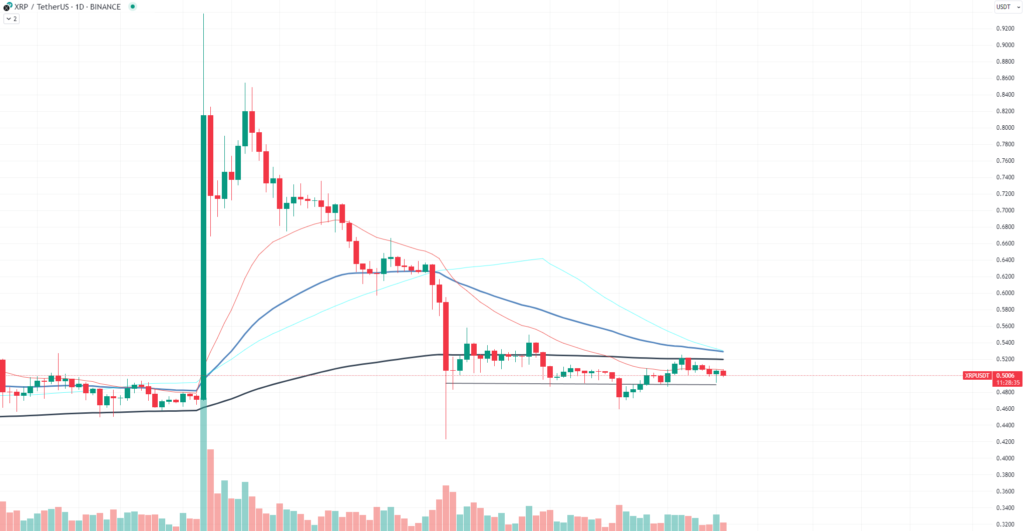
The XRP market has recently been everything but active. The price of the asset has been moving sideways, far from the positive tone that many investors were anticipating. From a local high of $0.52, when XRP was purchased at about $0.50, its value has declined.
The most current examination of market data suggests that the price of XRP has been stagnant, supporting the idea that the asset may be approaching another “death cross.” For those who are not familiar, a death cross happens when a 50-day moving average that is shorter-term crosses below a 200-day moving average that is longer-term, often indicating a negative trend.

XRP’s lacklustre price movement does not give rise to much optimism. The asset has been having trouble staying afloat, and the market appears to be getting ready for another fall. Sideways trend and falling pricing indicate a potentially difficult future for XRP.
What then is the central argument? It is reasonable to expect another death cross in the near future given the state of the market and the unimpressive performance of XRP. This can further depress investor confidence and send the asset into a further decline. To predict the asset’s future move, traders and investors should keep a careful eye on the moving averages and other technical indicators.
The current situation of XRP serves as a warning in a market where turbulence and speculation are key drivers. The warning symptoms are present even if it is too soon to sound the death bell. The asset requires a big stimulus to overcome this inertia; else, it risked continuing its decline into oblivion.
Cardano’s triangle is breaking
The price movement of Cardano has recently been under close examination, especially as it approaches the peak of a falling triangle. Although this geometric pricing pattern is sometimes seen as a negative indication, it is not as simple as it first appears. A volatility implosion caused by descending triangles might pave the way for a big price movement in either direction.
Cardano’s price has been fluctuating within this descending triangle, according to data from the SIC plugin, making it a focus for both traders and analysts. The bottom trendline of the triangle is located at around $2.10, and the asset is now valued at about $2.15. The price range’s contraction suggests that Cardano is getting ready to make a bold move.
What is this argument’s thesis? Descending triangles frequently function like a coiling spring, accumulating momentum for a significant price change. Despite the fact that they are often negative, nothing is certain. The breakout direction is the key. Indicators of a bullish reversal include a rise above the upper trendline and a fall below the lower trendline.
Cardano’s recent performance and the state of the market make it likely that a large price event is about to occur. A rise in trading activity may work as a breakout trigger, so traders should also keep a watch on volume.
PEPE staying alive
PEPE, which is well-known for its characteristic meme coin price fluctuations, frequently confuses investors. Recent data, however, point to a change in the story. PEPE is displaying indicators of a long-term trend reversal, thus it is important to pay attention.
The 21 Exponential Moving Average (EMA) has been in close proximity to the token’s price activity, almost being broken through. The 21 EMA is a critical indicator for traders, even for those unfamiliar with technical lingo. A breakthrough frequently denotes the start of a bullish trend, and PEPE is perched on the verge of one right now.
The Relative Strength Index (RSI), a momentum oscillator that gauges the speed and variance of price swings, heightens the curiosity. The PEPE RSI has increased from a weak 25 to a stronger 44. Even while we are not yet in the “overbought” zone, this increase is substantial. It signals a change in momentum, potentially pointing to the beginning of PEPE’s next bullish phase.
To treat these clues with prudence is crucial, though. It is impossible to overlook PEPE’s history of “pump and dump” tactics. Short-term profits have seduced investors, but when the price fell, they were left carrying the bag. Therefore, even if the current signs seem encouraging, they do not ensure further expansion.


















